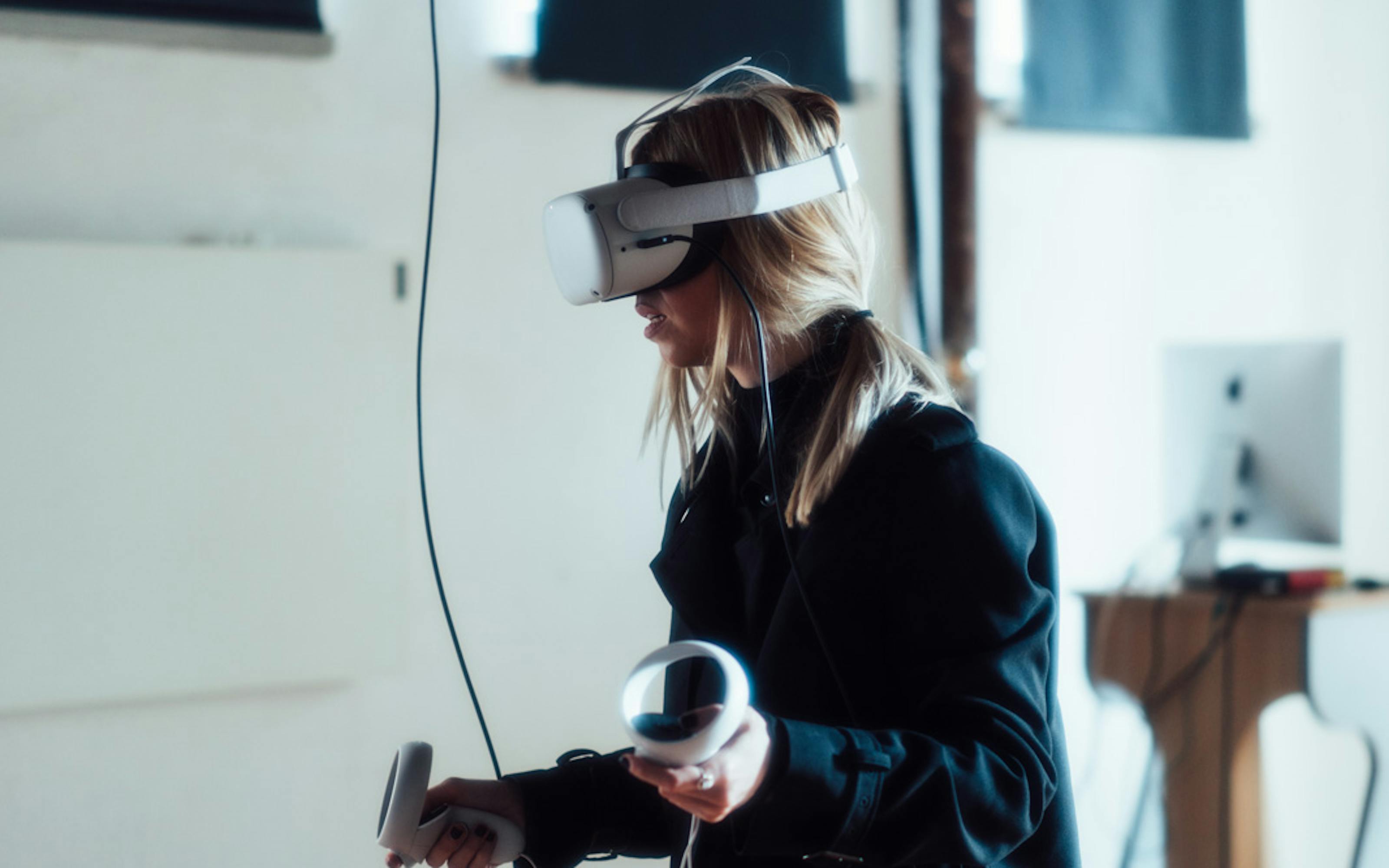
Step inside our second-year Visual Effects, Digital Arts & Animation students’ interactive visual installations
Posted on 2021-07-12T22:00:00+0000 in Student work
Our second-year Visual Effects, Digital Arts & Animation students present their end-of-year projects: an exciting array of interactive installations which explored one of the most exciting emergent applications of VFX technology.
Want to become a visual artist tomorrow? Then it’s essential to master the digital tools of today. Fluency in cutting-edge software and cross-media technology not only exponentially expands the palette of creative expression, but it places creators in the optimal position to contribute to the design of future realities. That’s why our Visual Effects, Digital Arts & Animation courses give powerful insight into diverse subject areas – including filmmaking, post-production, motion design, matte painting, 3D animation, digital compositing, visual effects supervising, creative coding, installation and interactive art – all the while fostering the independence, open-mindedness and awareness to become an exceptional artist.
Our second-year students’ recent exhibition of their interactive installation projects demonstrated one of the most exciting creative applications of VFX technology. Blurring the boundaries between the artwork and the experiencer, such installations focus on active play and experimentation rather than passive spectation – the perfect way to make an impact on today’s engagement-hungry world.
Though all of the students began their project from the same foundation – taught by programme lead Matthieu Schmit and tutor Paulina Greta – it was thrilling to see where their unique interpretations led them. Diego SanJuan Villanueva combined a laser grid with motion capture technology and sound to explore how the movement of the different participants affected the visuals and frequencies. Leander Blaschke adeptly employed an assortment of cutting-edge software to create a striking VR space game. Freddy Gutierrez beautifully combined laser light sensors with cymatics. And Margarita Govedarska encouraged her participants to guide their projected external bodies with the feelings induced by the dynamic frequencies in their ears. In short, the exhibition was emergent storytelling at its finest.
"This experience was one of the most exhausting and challenging, but first and foremost creatively and emotionally fulfilling, projects I've ever worked on."
"This experience was one of the most exhausting and challenging, but first and foremost creatively and emotionally fulfilling, projects I've ever worked on," says Leander Blaschke about his VR project. "I not only learned so much about efficiency, patience, software and, of course, working with people and their feedback. I was also able to professionally dive into a field that I, as an artist as well as a consumer, have genuinely loved and enjoyed since I was a child. All the knowledge about myself and the pipeline that I was able to gather makes me very confident going forward on the path as a creative person. And in the end, seeing people's enjoyment playing this small demo of mine made all the work worth it. I really want to keep on working on this project in the future and integrating the feedback I received so I can maybe properly launch it as a game at some point."
Study with us in 2021
There are still some spots remaining on our hands-on Visual Effects, Digital Arts & Animation course, which kicks off in September 2021. Apply now to secure your place.




